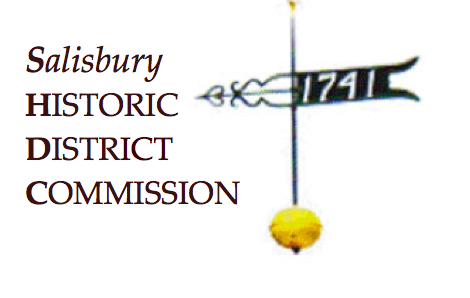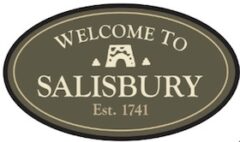Phone: (866) 245-1276
Fax: 860-435-2724
Mailing Address: PO Box 429, Salisbury, CT 06068
Email: [email protected]

| Commission Member | Title | Term Expires |
|---|---|---|
| Carol Mason | Chair | 2026 |
| Tom Callahan | Vice Chair | 2024 |
| Robert Highsmith | Commission Member | 2028 |
| Heidi Hoeller | Commission Member | 2027 |
| M. C. Taylor | Commission Member | 2025 |
| Howard Sobel | Alternate Member | 2024 |
| Candace Cuniberti | Advisory Board | 2024 |
| Elyse Harney | Advisory Board | 2024 |
| Georgia Petry | Recording Secretary | N/A |
Before making any physical alteration to the exterior:
All properties listed in the Salisbury Historic District Commission (SHDC) are required to fill out a Certificate of Appropriateness (COA) before making any physical alteration to the exterior of a building or structure affixed to the land that is visible from any public way or place regardless of the age or condition of the specific building or structure.
Download the COA form here. Then Fill out, Scan, and Email to: [email protected]. Include all supporting documents.
When received, the COA is dated, and this prompts SHDC to include a review and discussion with the homeowner/or their agent or contractor at the next monthly meeting, who is emailed an agenda with the meeting details.
At the meeting, the COA is either accepted or, after discussion, a change may be requested to the application for resubmission. During the discussion, we will identify whether this change is a modification or repair.
If it is a modification, there are next steps. We may first need a site visit or request more information – once concluded, a public notice runs for two weeks in a local paper. A Public Hearing will be held at the next monthly meeting. The applicant (owner and or representative) is expected to attend this meeting to field any questions. After public comments are expressed and any further questions from the commissioners are voiced, a vote is taken. SHDC must render a decision no more than 65 days after an application is deemed complete and filed.
Background Information:
The American historic preservation movement arose during the 1960s as a response to the destruction of historic buildings brought on by “urban renewal,” a well-intentioned but insensitive effort to rebuild rundown neighborhoods. Valuable old buildings, which had an important historic and contextual character, were destroyed in the process. This destruction continues despite a growing awareness of the value of preservation.
The Town of Salisbury has been a leader in the historic preservation movement. It was among the first ten towns in Connecticut to form a Historic District Commission. As early as 1962, Salisbury’s First Selectmen William B. Barnett appointed a committee to survey the buildings in the township and make recommendations as to which properties should be recognized and included in historic districts. The report was completed in 1969 and the first two historic districts were established in 1970. Since then additional districts have been designated.
Salisbury’s districts are varied. Some are made up of single buildings. Other districts contain a group of structures in close proximity to each other. An example of a district with several buildings in Salisbury Center, which includes the Congregational Church, Scoville Memorial Library and the structures which housed Salisbury Academy building and Bushnell Tavern. Important individual buildings are Ragamount Inn, Moore Leech’s House, “Holleywood,” and the Holley Williams House.
In the Town of Salisbury, the historic districts are intended to preserve the district character of the community. Salisbury has several communities dating from different periods of history. “Company towns” were built around industries. In Lakeville the knife factory and its associated workers’ housing have been preserved.
The National Historic Registry has designed a process for establishing a District. A Historic District can be created by the local Commission or by an individual for his or her own property. The registration process includes a survey, which is sent to the State Historic Commission together with the reasons for the application. After the state has approved the application, the local Commission approves the application. Subsequently, an ordinance establishing the new District is written. In a sense the Commission provides a forum for discussion and negotiation.
The main purpose of the local Historic District Commission is the preservation of the historic character within the village centers and the architectural integrity of the buildings which are under its jurisdiction. The commission also works with the Planning & Zoning Board and other Town bodies on projects of mutual interest.
Historic District Commission members are appointed by the Board of selectmen and the Commission operates under the Connecticut statues and local ordinances. The five members and three alternates serve five-year terms on a rotating basis. Meetings are held the first Wednesday of each month at the Town Hall in Salisbury. Members serve without pay, while the work of the Commission is funded by the Town.
Guidance and Resources:
- Rules of Procedure
- Survey and Planning Grants
- Historic Homes Rehabilitation Tax Credit
- SHDC History
- Standards for Rehabilitation
- Historic District Enabling Statute
- A Preservation Charter
Minutes:
For copies of minutes, that are not posted, please contact the Town Clerk’s Office, 860-435-5182.
2024 Minutes and Recordings
2023 Minutes and Recordings
October 3, 2023
Recording from 10.3.2023
September 5, 2023
Recording from 9.5.2023
July 25, 2023 (Special Meeting)
Recording from 7.25.2023
July 11, 2023
Recording from 7.11.2023
June 6, 2023
Recording from 6.6.2023
May 9, 2023 (Special Meeting)
Recording from 5.9.2023
May 2, 2023
Recording from 5.2.2023
April 14, 2023
Recording from 4.14.2023
April 4, 2023
Recording from 4.4.2023
March 7, 2023
Recording from 3.7.2023
February 7, 2023
Recording from 2.7.2023
2022 Minutes and Recordings
November 1, 2022
Recording from 11.1.2022
October 18, 2022 (Special)
Recording from 10.18.2022
October 4, 2022
Recording from 10.4.2022
September 6, 2022
Recording from 9.6.2022
June 7, 2022
Recording from 6.7.2022
May 3, 2022
Recording from 5.3.2022
April 5, 2022
Recording from 4.5.2022
March 1, 2022
Recording from 3.1.2022
2021 Minutes and Recordings
December 14, 2021 (Special Meeting)
Recording from 12.14.2021
November 30, 2021 (Special Meeting)
Recording from 11.30.2021
November 23, 2021 (Special Meeting Workshop)
Recording from 11.23.2021
November 9, 2021
Recording from 11.9.2011
October 5, 2021
Recording from 10.5.2021
September 7, 2021
Recording from 9.7.2021
July 28, 2021
Recording from July 28, 2021 Public Hearing Continuation
July 27, 2021
Recording from July 27, 2021 Public Hearing
July 6, 2021
Recording from 7.6.2021
June 15, 2021
Recording from 6.15.2021
June 1, 2021
Recording from 6.1.2021
May 4, 2021
Recording from 5.4.2021
